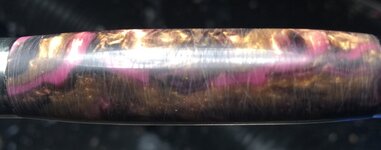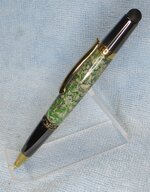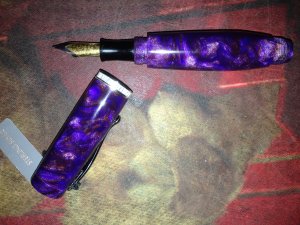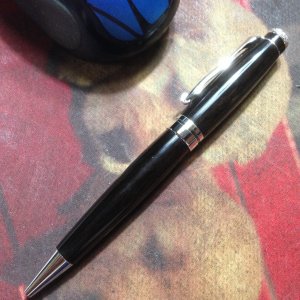Hello, I'm a newbie still and trying to figure what I'm doing wrong here...
I have an acrylic blank I turned down and then went through all the micro mesh, but still showed scratches...so I tried sanding from 150-600 then again with the micro mesh...still didn't look good. So I did a light turn with my scraper to get blank back to after a fresh turn and tried micro mesh sequence again...even uglier!
What am I doing wrong?
Ever other arcrylic I have done..about 25 has turned out great, maybe a few small hardly noticeable type of scratches, but not bad....but this blank is an upgrade....paid $10 for, so it's my first expensive blank, but can't figure why I'm getting scratches.
I have an acrylic blank I turned down and then went through all the micro mesh, but still showed scratches...so I tried sanding from 150-600 then again with the micro mesh...still didn't look good. So I did a light turn with my scraper to get blank back to after a fresh turn and tried micro mesh sequence again...even uglier!
What am I doing wrong?
Ever other arcrylic I have done..about 25 has turned out great, maybe a few small hardly noticeable type of scratches, but not bad....but this blank is an upgrade....paid $10 for, so it's my first expensive blank, but can't figure why I'm getting scratches.







